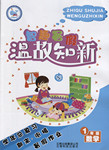题目内容
短文改错
假定英语课上英语老师要求同桌之间交换修改作文,请你修改你同桌写的以下作文。文中共有10处语言错误,每句中至多有两处。错误涉及一个单词的增加、删除或修改。
增加:在缺词处加一个漏字符号(∧),并在其下面写出该加的词。
删除:把多余的词用斜线(\)划掉。
修改:在错的词下划一横线,并在该词下面写出修改后的词。
注意:1. 每处错误及其修改均限一词。
2. 只允许修改10处,多者(从第11处起)不计分。
Last weekend’s concert, organized and performing by the students of the Welsh Community College, was great success. The student had been practicing for months for the concert. They were excited that when they heard Gareth Jones was coming to present the prizes. Over 100 young performers play a mixture of jazz, classical or folk music. One of the highlights were 14-year-old Megan Evans, playing traditional Welsh folk songs. The concert ended with a very loud pop tune and anyone in the hall stood up and danced with the music. It was a magically atmosphere and a wonderful evening.
 智趣暑假温故知新系列答案
智趣暑假温故知新系列答案 英语小英雄天天默写系列答案
英语小英雄天天默写系列答案 暑假作业安徽少年儿童出版社系列答案
暑假作业安徽少年儿童出版社系列答案
